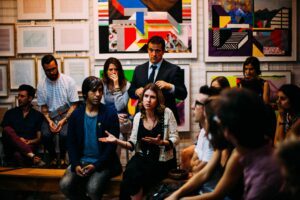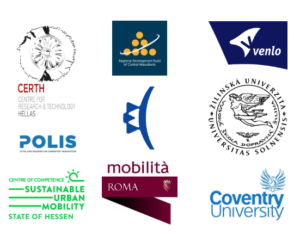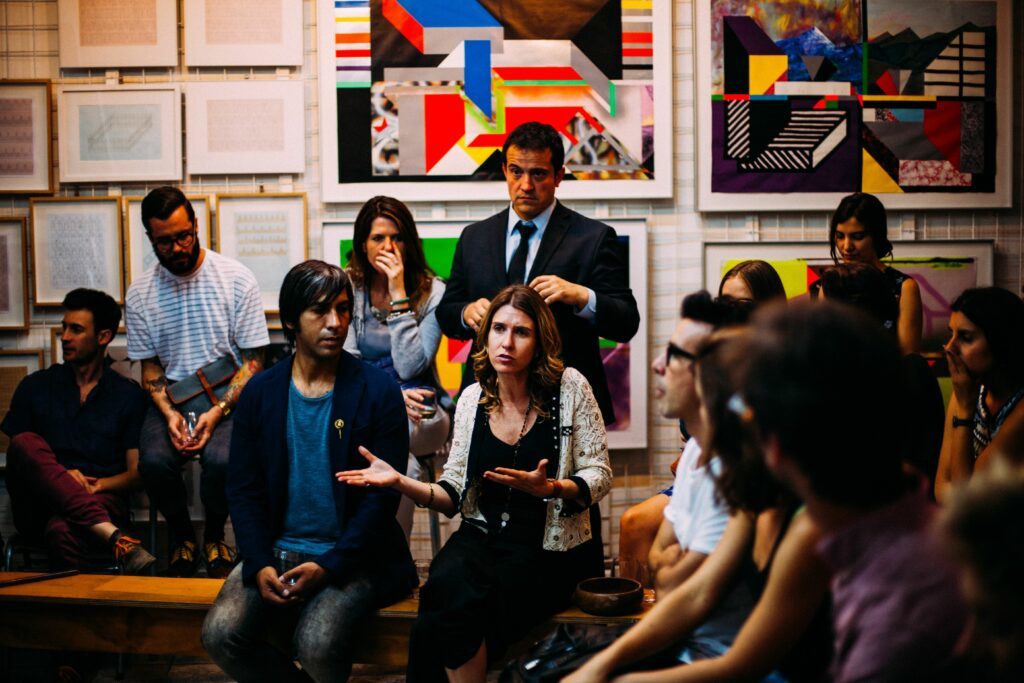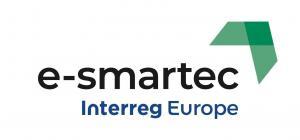Stakeholder Engagement: Increasing sustainable mobility through SUMP
Alessia Giorgiutti on the importance of encouraging and enabling citizens to get actively involved in programmes and projects designed to increase the sustainable mobility efforts of their city
Many European urban areas face a series of environmental challenges linked to mobility, one of the most consistent ones being air pollution due to traffic congestion.
Traffic congestion increases vehicle emissions and degrades air quality, and recent studies have shown excess morbidity and mortality for drivers, commuters and citizens living near major roadways. The transition to a low carbon economy, however, is not as smooth as any good urbanist or mobility expert would wish: there are all the intricacies concerning the harmonisation of local, regional and national policies on the matter and, even more frequently, the pretty exhausting challenge of ‘getting everyone on board’ – more commonly put as ‘engaging stakeholders’.
‘Engaging stakeholders’: is that a threat?
No, not really. But there is something dreadful when you say it out loud, this being a result of the sort of commitment the action itself requires from people working in the mobility sector. Think about it: it is no longer enough to just plan, fund and put up a great urban mobility strategy with the purpose of reducing traffic congestion, it is also necessary to seek comments and inputs from all those groups who can affect or are affected by the strategy while not causing a commotion.
This means that mobility organisations that actively work in project planning can no longer choose if they want to engage with stakeholders or not. The only decision they need to take is when and how successfully to engage, and amidst that, they have to be mindful and accepting about it. Mindful because engaging different stakeholders often translates into considering a wide variety of different needs, and accepting because the first rule of engagement requires consistent feedback, and feedback is not - and cannot be - always positive or encouraging.
What are the mobility strategies that upset people the most?
Is it maybe parking? Or pedestrianizing the city centre? Is it investing on bike lanes or encouraging carpooling? This list could go on for lines and lines, because urban mobility can be a very divisive subject – just think of what makes a pedestrian happy and then think of what makes a car-driver rejoice and, I kid you not, you could not have more polarizing answers.
So, imagine cramming a good number of really great mobility strategies at once and create a balanced mix of measures that would make your city or region more liveable and sustainable, and guess how difficult but vital would be to engage stakeholders to make it work: you have got a Sustainable Urban Mobility Plan in your hands, and you do not even know it.
The Perks (and the Sorrows) of being… A Sustainable Urban Mobility Plan
A Sustainable Urban Mobility Plan (SUMP) is a strategic planning instrument for local authorities that fosters the balanced development and integration of all transport modes while encouraging a shift towards more sustainable ones and aims to solve urban transport problems and contribute to reaching local and higher-level objectives for environmental, social and economic development. Simply put, an urban mobility dream come true.
Yet, involving stakeholders is still quiet the challenge. Since the SUMP is very much rooted in committing to a behavioural shift within the frame of how anyone in the urban area moves, works, shares space and basically lives, it takes a wide array of engagement (and marketing) techniques to encourage citizens and stakeholders to take ownership of the new sustainable mobility ideas, transport policies and projects.
e-smartec is a three-year project that is funded under the Interreg Europe project and the thematic area of low carbon economy. The project initiated at the beginning of August 2019 and is split into two phases: phase 1 has a duration of two years, while phase 2 has a duration of one year. e-smartec aims at reinforcing existing policies and programmes by enhancing each step of mobility planning with the deployment of targeted marketing techniques for linking bottom-up and top-down decision making. The overall goal is to develop action plans that provide tailored guidelines on citizens’ and stakeholders’ engagement marketing techniques. The nine e-smartec partners from seven EU countries representing the six e-smartec testbed areas (regions of Central Macedonia, Bratislava, Venlo, West Midlands, Lazio and Hessen) join forces in their ultimate goal of providing tailored guidelines on citizens’ and stakeholders’ engagement marketing techniques for innovative decision making and traditional procedures.
You can read more about e-smartec at https://www.interregeurope.eu/e-smartec/
Engagement techniques: what is what?
Projects like REFORM (Integrated Regional Action Plan For Innovative, Sustainable and Low Carbon Mobility) and in particular e-smartec (enhanced sustainable mobility with marketing techniques) teach us that defining techniques (marketing techniques and engagement to co-planning techniques) and identifying good practices to associate with them are the first and most relevant steps to get where urban and mobility planners want to be when it comes to SUMP – deep under stakeholders’ skins, and right inside their heart.
Marketing techniques for increasing awareness, that cater to the special promotion of a service, product or procedure, include using social media, but also mastering the wheel of persuasion and word of mouth, as well as internet, undercover, relationship and cause marketing. Instead, engagement to co-planning techniques, which have the goal to support participatory planning, include reaching audience through dedicated surveys and personal interviews, organising focus groups, public meetings and open space events, engaging online users via interactive events, promoting interactive learning environments through gamification and building capacity with seminars and trainings.

Involving stakeholders is still quite the challenge.
Thessaloniki, your relationship game is strong
Voltaro, an interactive annual celebration promoting active modes in Thessaloniki, region of Central Macedonia, represents a great, cheap, and easily replicable relationship marketing case. The event is organized with the active involvement of volunteers who interact with passers-by, thus increasing their interest on sustainable urban mobility and environmental issues. Volunteers organize interactive games that allow participants to play and get more information on the companies that are present in the event as sponsors and exhibitors, as well as their activities.
As in the case of relationship marketing, this kind of event builds a long-term relationship with stakeholders – 2020 will hopefully be the fourth edition of this incredible event.
An der schönen blauen Donau, we make co-planning work
Transdanube Pearls is a network focused on the Danube river that promotes sustainable mobility in tourism. As an exemplary good practice for co-planning and capacity building, Transdanube Pearls deployed engagement techniques (network seminars, assemblies, etc.) to bring the potential network members together and engage them to eventually participate. Between 2017 and 2019, members were awarded the title of ‘Danube Pearls’ and sustainable mobility solutions were offered for tourists to travel between the ‘Pearls’.
Even though the Bratislava self-governing region presents a pretty divided transport arena – which makes the dialogue and planning for sustainable mobility challenging, Transdanube Pearls has shown that it is possible to cooperate with tourists, locals, public authorities, business owners and other stakeholders for a long-term commitment to sustainability.
But…do we really need to engage?
Yes, we do. Based on past experiences a successful and durable sustainable urban mobility plan cannot be achieved without the commitment of transport systems’ key stakeholders: it is thus necessary to foster a dialogue-based participation process with those who are at the heart of each city’s transport system – the local civil society, in order to better analyse local mobility problems, develop common targets and select mobility strategies and measures that are collectively accepted.
In this sense, the active support from stakeholders and the wider public helps to legitimise the SUMP and enhance its quality and durability: only a SUMP that was developed in cooperation with important stakeholders and the public will be accepted and effective in practical and financial terms.

“A second round of citizens’ panels (12 in total) was organised so the citizens could validate and rank the research priorities identified by the experts”
Venlo says: ‘All hands on (the card) deck… for sustainable goals’
Sometimes, in order to engage stakeholders, you need one ace up your sleeve – and if all these card puns did not spoil the surprise just yet, we are talking about… card games. More specifically, the Trendsportal card game that has been used to inquire stakeholders on what sustainable goals should be prioritized within Venlo’s SUMP (North Limburg). The game is very clear and simple: each card is marked with a goal; players are asked to select specific cards (goals) to then write down their proposals for the achievement of the selected goal.
In Venlo’s case, the gamification turn with the Trendsportal card game helped with the smooth running of the SUMP decision-making process: for instance, around 100-150 stakeholders (staff members of the Municipality; entrepreneurs; citizens; teachers/pupils/students; cyclists; people with disabilities; members of the town council) participated in a game session where the goal “support the environment and energy transition” got the most attention, highlighting that this should be, according to stakeholders, the most important subject in the municipal mobility policy.
Meeting and planning for including everyone’s view: West Midlands can!
To promote inclusiveness in the debate on sustainable innovation, Coventry (West Midlands region) consulted with its citizens in a series of planned panels and public meetings within the CASI project (Public Participation in Developing a Common Framework for Assessment and Management of Sustainable Innovation).
During a first round of citizens’ panels, visions for the sustainable future state of the environment were worked out (structured as title and short and long descriptions, the latter including pros, cons and elements needed to realise them). Then, these visions were translated into research priorities on sustainable innovation (27 in total) by a panel of experts. Afterwards, a second round of citizens’ panels (12 in total) was organised so the citizens could validate and rank the research priorities identified by the experts. The national Top-10s were later merged with the top-10 lists from other panels organised by other partners to create a transnational Top-10 list of research priorities for bringing about a more sustainable future.

“Rome’s SUMP was generated through an intense multilevel participatory methodology that touched on many marketing and engagement techniques, such as co-planning, e-engagement and crowdsourcing”
All sustainable roads lead to Rome
Lazio region and its capital, Rome, have had a good opportunity to invest thoroughly in the engagement of both citizens and stakeholders through the participation process carried out as part of Rome’s SUMP development. An increased cooperation of both target groups has been achieved and relevant GPs are there to prove it. Rome’s SUMP was generated through an intense multilevel participatory methodology that touched on many marketing and engagement techniques, such as co-planning, e-engagement and crowdsourcing. For example, the SUMP introduced a new participation approach, involving the citizenship through a specific open portal that allowed knowledge- and opinion-sharing and voting of infrastructural adjustments, public transport improvements, extensions of actual lines and creation of new ones.
Then, these visions were translated into research priorities on sustainable innovation (27 in total) by a panel of experts. Afterwards, a second round of citizens’ panels (12 in total) was organised so the citizens could validate and rank the research priorities identified by the experts. The national Top-10s were later merged with the top-10 lists from other panels organised by other partners to create a transnational Top-10 list of research priorities for bringing about a more sustainable future.
Hessen’s has all the capacity building tools in its box
The State of Hessen has a long success in the creation of municipal SUMPs or other plans related to mobility and demonstrates a good cooperation among stakeholders. One of their best practices in terms of Active Mobility Marketing Toolbox, which is a great example of co-planning and capacity building. The Toolbox is a selection of standardised materials for local authorities and politicians to raise awareness and discuss active mobility issues in different formats, with a high publicity effect, and at low costs and efforts. The possibility of using the toolbox in other context sand drawing further learning effects from it is estimated as high: the prerequisite for implementation is that there has to be a strong political will to support the project and to identify a clear and central contact point, which would take care of the provision of the material.
Good Engagement? Better long-term (SUMP) relationship
As it requires deep knowledge of marketing and sociological aspects, it is fair to say that triggering and leveraging engagement in mobility planning are both big challenges for authorities, but they also represent, as seen above, a big chance of success, for they ensure cooperation and knowledge exchange between planners, politicians, institutions, local as well as regional actors and citizens.
A key success factor to this cooperation process is to consistently collect inputs from citizens and stakeholders to feed back into technical planning and political decision making. As shown in the regional good practices of Central Macedonia, Bratislava, Venlo, West Midlands, Lazio and Hessen, a wide range of involvement techniques is available for this scope: planning authorities just need to find their suitable combination to further guide and facilitate the discursive planning process, as well as to adequately react to conflicts and ensure constant monitoring and quality control.
Yes, there is nothing easy about finding the right combination of marketing and engagement techniques, but in the long run, it does pay off: encouraging and enabling citizens to get engaged and to join the debate, in particular in the early planning phases when processes are still open and flexible, will help design sustainable, transparent, durable, legitimate and accepted mobility plans that can not only improve the quality of life for residents, but also strengthen the vitality of the civil society and the local political culture.
Want to know more?
For Voltaro: Mr Konstantinos Gioutikas – Region of Central Macedonia – k.gioutikas@pkm.gov.gr
For TransDanube Pearls: Mrs Eva Malichova – University of Zilina – eva.malichova@fri.uniza.sk
For Trendsportal: Mr Dieter Schepers – Municipality of Venlo – d.schepers@venlo.nl
For CASI project citizen panel meetings: Mrs Alba Avarello – Coventry University Enterprises Ltd – aavarello@cad.coventry.ac.uk
For Rome’s SUMP participatory approach: Mr Andrea Pasotto – Rome Mobility Agency – andrea.pasotto@romamobilita.it
For Active Mobility Marketing Toolbox: Mr Jens Vogel, Mrs Simone Fedderke, Mr Nils Böttge – HTAI/CC-SUM – sump@fz-num.htal.de
Author: Alessia Giorgiutti is Project and Communication Officer at Polis Network

In collaboration with e-smartec Partners: Centre for Research and Technology-Hellas (CERTH), Promotion of Operational Links with Integrated Services (Polis Network), Hessen Trade & Invest GmbH/Centre of Competence for Sustainable Urban Mobility (HTAI/CC-SUM), Regional Development Fund of Central Macedonia on behalf of the Region of Central Macedonia, Link Campus University, Rome Mobility Agency, Municipality of Venlo, University of Žilina, Coventry University Enterprises Ltd
 Involving stakeholders is still quite the challenge.
Involving stakeholders is still quite the challenge.
